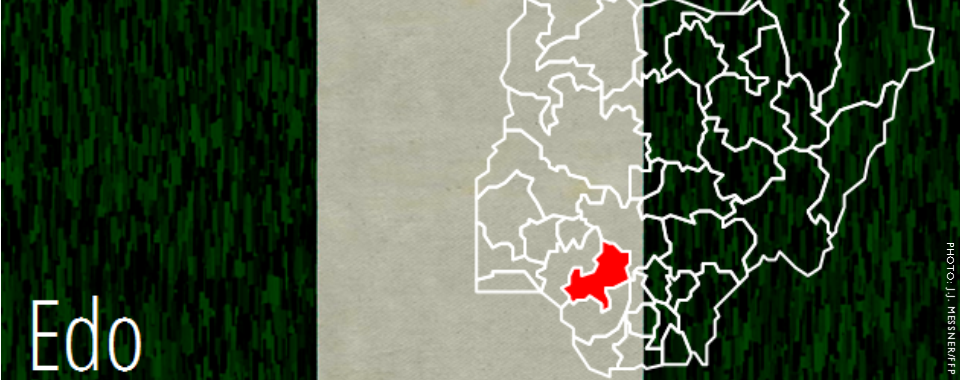BY NATE HAKEN AND PATRICIA TAFT*
Edo was one of the Niger Delta’s more violent states on a per-capita basis with Incidents of violence and associated fatalities increasing over the three and a half year period. Issues in Edo ranged from protests, criminality, abductions and domestic violence to clashes between gangs, cults, political groups and communities. The vast majority of these incidents were reported in the Oredo Local Government Area (LGA), home to Benin City, although violence was also reported further north, notably in the Esan West, Uhunmwonde, and Etsako Central, East and West LGAs.
Edo’s State governor, Adams Aliyu Oshiomhole, assumed office in November 2008 after winning an appeal in the 2007 elections, which had initially declared his rival Oserheimen Osunbor governor. In July 2012, Oshiomhole was reelected for a second term in a landslide victory as a member of the Action Congress of Nigeria (ACN), which merged with the All Progressives Congress (APC) in 2013. Since then there has been rising political tensions between PDP and APC supporters in the state, with the next gubernatorial election scheduled for 2016.
This Conflict Bulletin provides a brief snapshot of the trends and patterns of conflict risk factors at the State and LGA levels, drawing on the data available on the P4P Digital Platform for Multi-Stakeholder Engagement. It represents a compilation of the data from the sources listed below, not necessarily the opinions of FFP or any other organization that collaborated on the production of this bulletin.
The summaries draw on data collected by ACLED, FFP’s UNLocK, the Council on Foreign Relations’ NST, WANEP Nigeria, CSS/ETH Zurich, NEEWS2015, and Nigeria Watch integrated on the P4P platform. They also draw on data and information from “Violence in Nigeria: Patterns and Trends,” by Patricia Taft and Nate Haken (Springer Press, April 2015).
*Hannah Blyth also contributed to this report.
